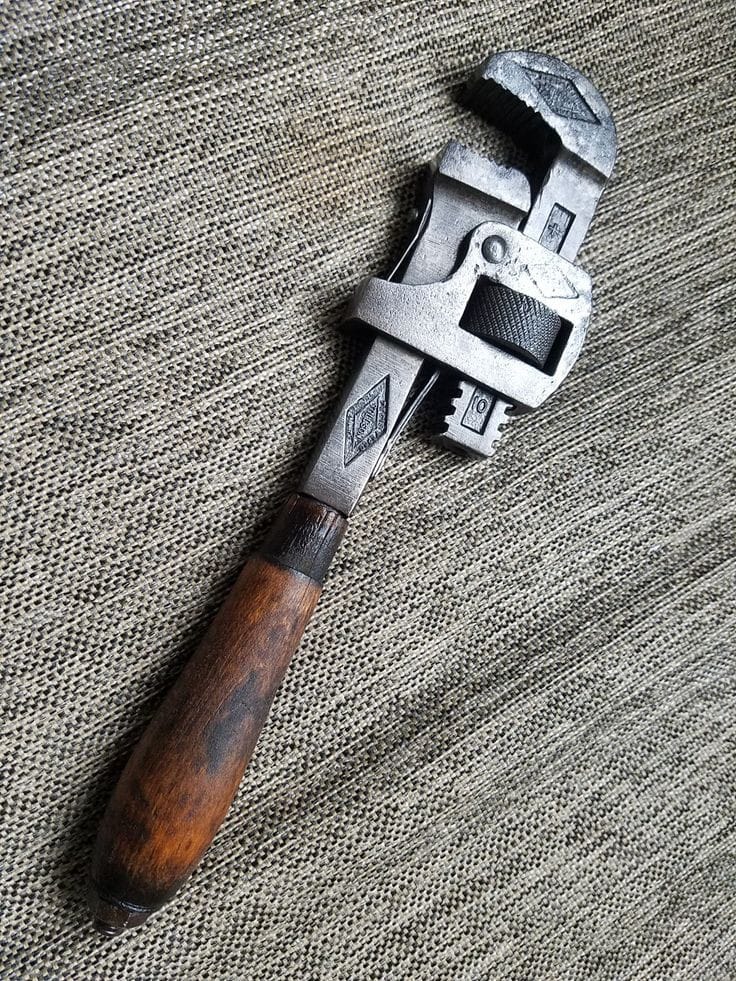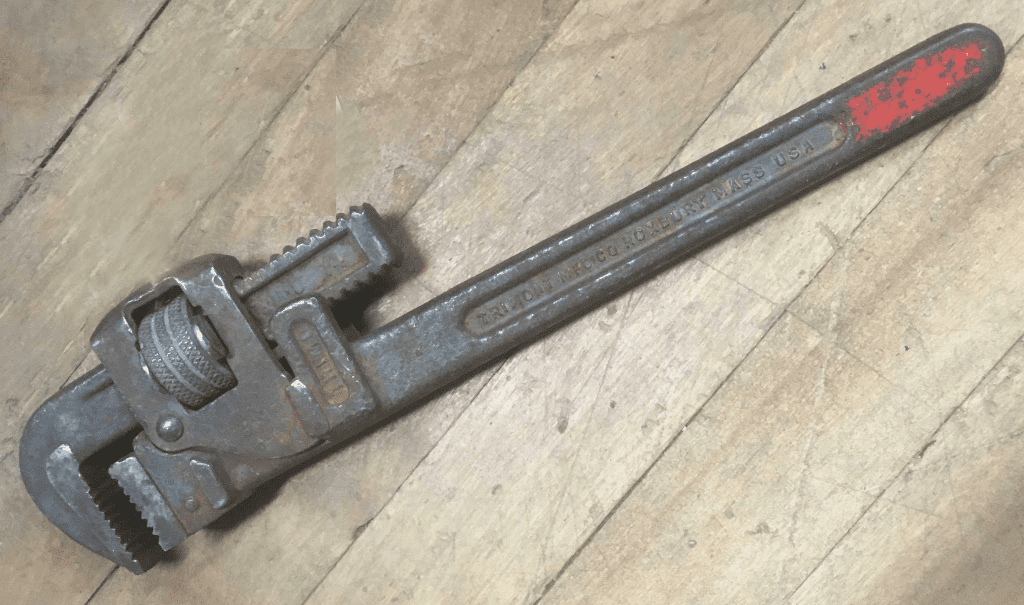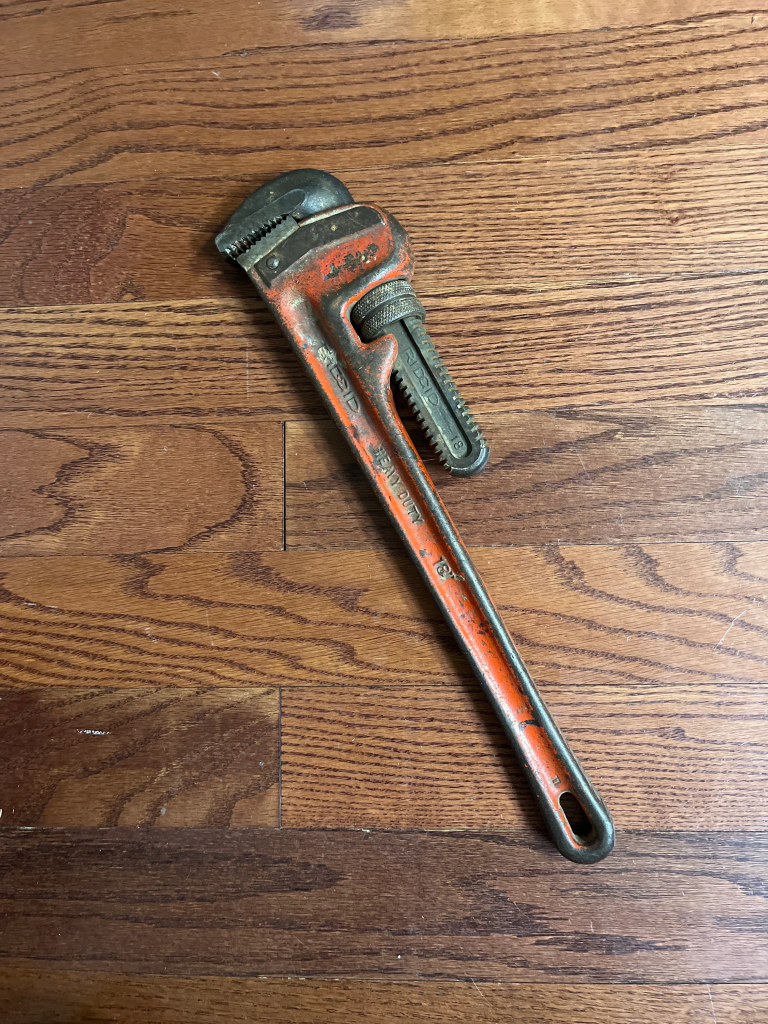In the world of mechanical trades, certain tools have become so indispensable that it’s hard to imagine a time before their existence. The pipe wrench is one such tool. Known for its versatility and reliability, it has been a staple in plumbing and piping work for over a century. But how did the pipe wrench come to be? What makes it so uniquely suited to its job? Let’s explore the fascinating history and evolution of this iconic tool, and discover why it remains a go-to for professionals today.
The Birth of the Pipe Wrench: A Simple Idea That Changed Everything

The pipe wrench, as we know it today, was invented by Daniel C. Stillson, a mechanic at the Walworth Company in Cambridge, Massachusetts. On October 12, 1869, Stillson was awarded U.S. patent #95,774 for his innovative design. This groundbreaking invention was intended to grip and turn circular objects like pipes, bars, and tubes. While other adjustable wrenches existed, none were specifically designed to handle the smooth, round surfaces that Stillson’s wrench could tackle.
Why Stillson’s Design Was Revolutionary
The pipe wrench’s basic structure consists of a metallic handle, a fixed lower jaw, and an upper jaw (known as the hook jaw), which can be adjusted using a circular nut. What made Stillson’s design unique was the rocking motion of the upper jaw. When pressure is applied to the handle, the upper jaw pivots, causing both jaws to clamp down on the pipe. This “wedging action” not only provides a firm grip but also allows the tool to apply significant torque without slipping.
The Evolution of the Pipe Wrench Through the 20th Century
Throughout the early 20th century, the pipe wrench became essential in gas, steam, and water distribution systems. During this period, most pipes were made of iron and needed to be tightly screwed into fittings to create leak-proof connections. The pipe wrench’s ability to apply substantial force made it the perfect tool for this task, as it ensured pipes were securely joined.
The Role of Pipe Wrenches in Early Plumbing and Infrastructure
With the rise of plumbing and heating systems in the 1900s, the demand for tools that could reliably handle iron piping increased. In these early systems, pipes were often threaded at each end and required precise, high-torque turns to create leak-proof seals. Traditional wrenches, such as screw wrenches and tongs, were difficult to use and required significant effort. The Stillson wrench, with its intuitive wedging action, quickly replaced these older tools and became the standard for pipe fitting.
From Iron to Aluminum: Materials and Innovation Over Time
Initially, pipe wrenches were constructed from heavy iron, making them durable but cumbersome. As the need for lightweight yet sturdy tools grew, manufacturers began experimenting with different materials. Aluminum versions emerged, offering a lighter alternative while still providing the same strength and reliability as iron wrenches. Today, pipe wrenches are made from a variety of materials, including stainless steel, which resists rust and corrosion, making it ideal for work in harsh environments.
The Mechanics of a Pipe Wrench: How It Works
The success of the pipe wrench lies in its simplicity and effectiveness. When positioning the wrench on a pipe, the pipe should be centered between the jaws, leaving a small gap between the shank of the hook jaw and the pipe. This gap allows the jaws to pivot and bite down as force is applied to the handle, creating a firm grip that increases as pressure is added.
Proper Positioning for Optimal Grip
One of the most critical aspects of using a pipe wrench is ensuring the correct positioning of the tool on the pipe. Proper alignment between the fixed and moveable jaws allows the wrench to engage effectively, minimizing the risk of slippage. Many users make the mistake of allowing the back of the hook jaw to touch the pipe, which reduces the tool’s gripping power. By keeping the small gap intact, users can maximize the wrench’s performance and avoid unnecessary wear on the tool.
Types of Pipe Wrenches: A Tool for Every Task
Over the years, the pipe wrench has evolved into various specialized forms. Today, there are six primary categories, each suited to different tasks. Here’s a look at the main types and what sets them apart:
1. Straight Pipe Wrench

The most traditional type, the straight pipe wrench, is versatile and commonly used for most plumbing and pipe fitting jobs. With its simple design, this wrench is the go-to tool for general pipe work.
2. End Pipe Wrench
This type has jaws at a slight angle, allowing it to grip pipes in tight spaces or close to walls. End pipe wrenches are ideal for areas where a straight wrench might not fit, making them a must-have for confined workspaces.
3. Offset Pipe Wrench
With an offset handle, this wrench provides better leverage and access to hard-to-reach places. It’s commonly used in situations where pipes are located at odd angles or are close to walls.
4. Compound Leverage Wrench
The compound leverage wrench is designed to amplify torque, making it ideal for loosening stubborn or frozen joints. This wrench is perfect for heavy-duty applications where extra force is required to break seals or remove tightly fitted pipes.
5. Chain Pipe Wrench
Featuring a chain that wraps around the pipe, this type is highly effective on larger pipes. It’s commonly used in industrial settings, where the ability to grip and turn large pipes is essential.
6. Strap Wrench

Unlike other pipe wrenches, the strap wrench uses a flexible strap to grip the pipe, making it perfect for polished, plastic, or fragile surfaces that a traditional wrench might damage. This type is particularly useful for working with softer materials or delicate pipes.
The Impact of the Pipe Wrench on Modern Tools
Before the Stillson wrench became widely available, workers relied on screw wrenches or tongs, which required more effort and provided less control. The mass production of the Stillson wrench in the early 1920s revolutionized the piping industry, enabling workers to complete tasks more efficiently and effectively. By replacing older tools, the pipe wrench streamlined the work of plumbers, pipe fitters, and mechanics, establishing itself as an essential tool in their toolkits.
Conclusion: The Timeless Utility of the Pipe Wrench
The pipe wrench may have humble beginnings, but its impact on the plumbing and piping industry is profound. Designed by Daniel Stillson in 1869, this simple yet powerful tool has undergone numerous adaptations, making it suitable for various applications. Whether you’re working with gas, steam, or water pipes, the pipe wrench remains invaluable. With its versatility and reliability, it continues to be a trusted companion for professionals, proving that a well-designed tool can indeed stand the test of time.


